A month ago I set out to review Brian Michael Bendis’ Words for Pictures: The Art and Business of Writing Comics and Graphic Novels. Bendis is one of the comics industry’s most successful creators, and his book offers advice and insight on writing comics, not only from Bendis, but a multitude of esteemed comics professionals like Matt Fraction, Ed Brubaker, Scott Allie, Tom Brevoort, among many others.
After reading the book, I realized that a conventional book review was inadequate. Words for Pictures offers advice to readers about writing comics; having never written a comic, I had no way to evaluate the merits of the book’s advice. I decided that I would put Bendis’ advice to the test with a “hands-on” review of Words for Pictures – I would write and publish a comic.
Why?: Bendis begins the book with a question – “Why do you want to be a writer?” That’s a question each reader must answer for himself, but Bendis provides an answer that I agree with completely; writers write because they “have to”. Bendis advises writers not to write for fame and fortune, but to write honestly and to write something that they, as readers, would like to read.
Reading Bendis’ book inspired the recollection of my favorite issue of the comic book Powers (written by Bendis); in issue seven, real-world comics writer Warren Ellis goes for a police ride along with the comic’s protagonist in order to do research for one of his graphic novels. I’m a fan of Ellis’ work, and I loved his appearance as a comics character. Exploring ideas for the comic that I would write, I realized that I would love to read a comic with Ellis as the protagonist.
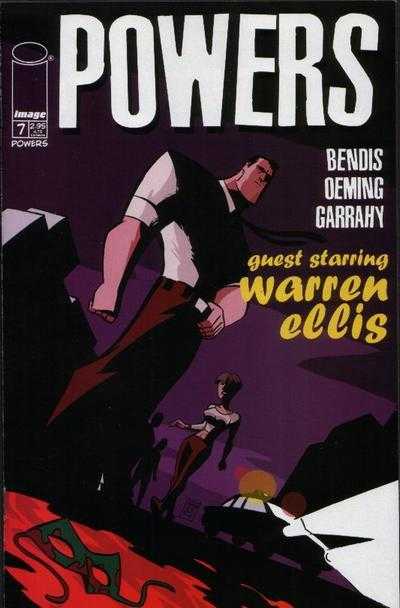
The idea quickly evolved – instead of a comic starring Warren Ellis, what if the protagonist was a delusional old robot that thought it was Warren Ellis? In addition to his comics work, Ellis is a noted futurist, and I had this mental image of a bearded clockwork robot smoking a cigarette and drinking whiskey at a restaurant while it tweeted about “the future”. The character name “Clockpunk Ellis” came into my head, with the idea that the robot was created by Leonardo Da Vinci during the Renaissance and recently developed the delusion that it was Warren Ellis.
I thought “Clockpunk Ellis” was a fun, satirical concept, and it would definitely be a comic that I wanted to read. Now I just had to create it.
The Comic Script: Bendis explores the different types of script formats that writers can use, from the more detailed “full script”, in which writers provide dialogue and page-by-page details to the artist, to the “Marvel Style” script (named for a style of scripting developed by Marvel Comics in the 1960s), in which writers provide a brief description of the entire comic story, with the artist given more responsibility for the storytelling, particularly the layout and pace of the comic.
Bendis explores the pros and cons of each method, and makes the point that in both formats, the writer is writing for the artist, who takes the writer’s script and illustrates the comic. I have absolutely no art skills, so I needed to collaborate with an artist if Clockpunk Ellis was ever to materialize.
Writing for the Artist: I contacted my NBC! colleague and artist Josh Rector to see if he would be interested in helping me evaluate Bendis’ advice by creating a comic. Josh agreed to collaborate with me on a short comic strip, and I pitched Josh the idea of “Clockpunk Ellis”.
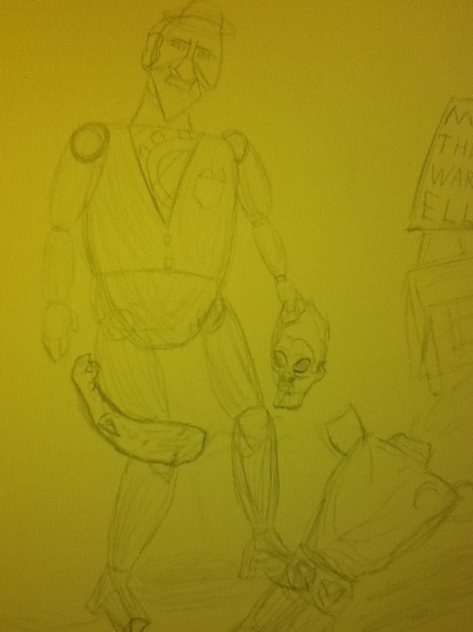
Bendis notes that creating a comic is a collaborative effort involving at minimum both the writer and artist (and, for most comics, an editor, inker, letterer, and colorist). The writer has a responsibility to “inform, inspire, and entertain” his collaborators, to inspire them to do the “work of their lives”.
Josh was the first person to whom I pitched “Clockwork Ellis”, and right away he made suggestions that improved the concept. Whereas I saw the protagonist as a satire of Warren Ellis, Josh saw the character’s action potential – Clockpunk Ellis was a robot! I originally wanted Clockpunk Ellis to sit at a table sending tweets, whereas Josh thought the character could be more action-oriented. Josh’s concept was brilliant – not only could the Clockpunk Ellis comic be a satire, it could also have some cool action in it.
Bendis writes: “Writers write for their artists. Not knowing they are writing for their artists is the biggest mistake I see comic book writers make. And it happens all the time.” Bendis recommends that writers get art samples from their artists. I had never seen Josh’s artwork before, so I requested that he send me art samples so that I had a better idea of his style.
Bendis writes: “I don’t ask the artists to draw my world; I write into theirs. I literally close my eyes and imagine the world according to them. I see the faces that they draw, the buildings the way they draw them. I try to imagine the perfect comic book art from the particular artist and I write toward that vision.” That approach impressed me, and I made it my goal for the collaboration with Josh.
Josh’s art style is influenced by Cubism. I thought his style was perfect for the unique and strange comic that we were creating. Josh’s samples did not include any comics work, so I was not clear about how he would breakdown the action in the comic. However, because the comic would be posted into an online book review, I knew that we would not have a lot of room to tell a story, so I wanted to keep the action simple and fun.
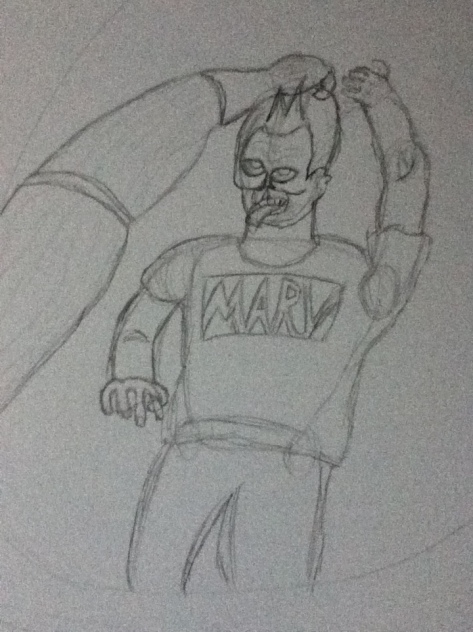
Before I wrote the script, I communicated with Josh about a possible story idea to see if it was something that he wanted to illustrate. I thought Clockpunk Ellis fighting zombies at a comics convention would be fun, and Josh agreed.
Below is the script that I wrote and sent to Josh. For the captions, I wanted to use tweets, as the real Ellis is a prolific Twitter user, and therefore so is Clockpunk Ellis:
PAGE ONE
Panel 1: Close up of CE grabbing zombie by hair
CAPTION: @ClockpunkEllis Despite what you hear, I’m not a clockwork robot built by Leonardo da Vinci
Panel 2: Close up of CE pulling head off of zombie
CAPTION: @ClockpunkEllis I’m Warren Ellis. I tweet about the future while smoking. Whiskey is my hobby.
Panel 3: Wide shot of CE surrounded by zombies at a comics convention
CAPTION: @ClockpunkEllis I fight zombies. And editors. But mostly zombies
PAGE TWO
Panel 1: Close up of zombies swarming CE
CAPTION: @ClockpunkEllis Robert Kirkman was bitten by a rabid fan boy one hour ago
Panel 2: CE pushes zombies away
CAPTION: @ClockpunkEllis Now everyone’s infected
Panel 3: CE is running with zombies close behind, about to tackle him.
CAPTION: @ClockpunkEllis I hate comic conventions
Panel 4: CE is tackled to the floors by zombies.
CAPTION: @ClockpunkEllis I need a cigarette
Josh took the script and provided the art, logo, and lettering for the comic, and formatted the comic for this site. We’re both proud to present Clockpunk Ellis:
Clockpunk Ellis wouldn’t exist without the insight and inspiration that Brian Michael Bendis provides in Words for Pictures: The Art and Business of Writing Comics and Graphic Novels. Bendis and his fellow comics creators provide good advice on creating comics and making a living in the comics industry. Even if you aren’t planning on creating a comic, Words for Pictures is an informative book packed with good ideas and anecdotes from some of your favorite comics creators.
You can follow Clockpunk Ellis on Twitter at https://twitter.com/ClockpunkEllis .
The images above are the property of their respective owner(s), and are presented for educational purposes only under the fair use doctrine of the copyright laws of the United States of America.
Clockpunk Ellis is © Reed Beebe & Josh Rector.

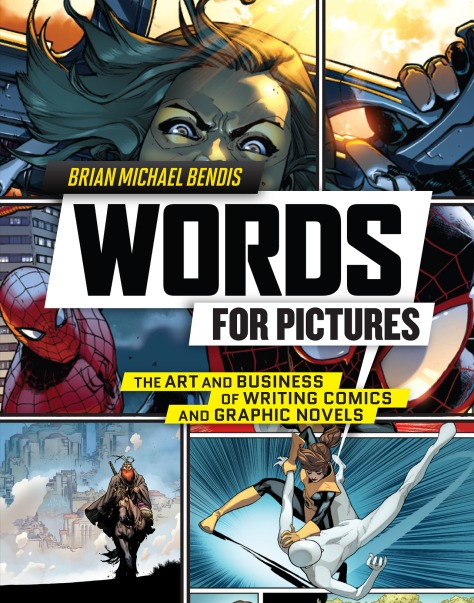
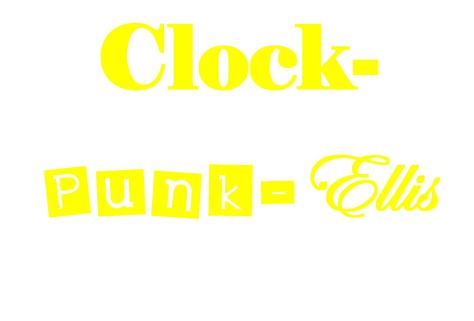
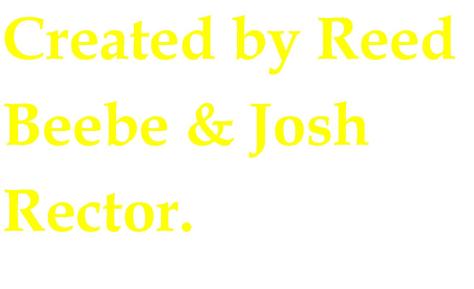

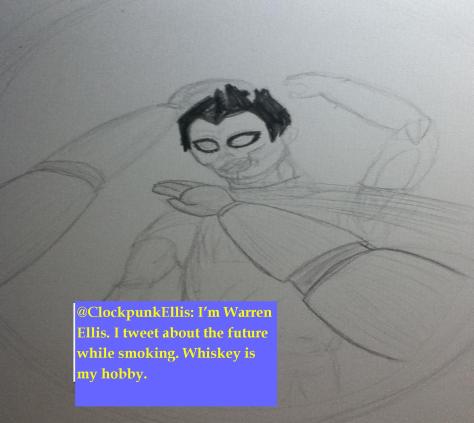
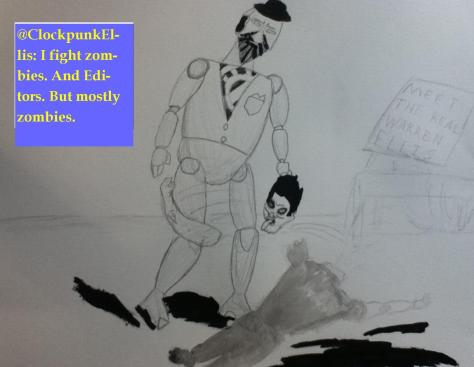
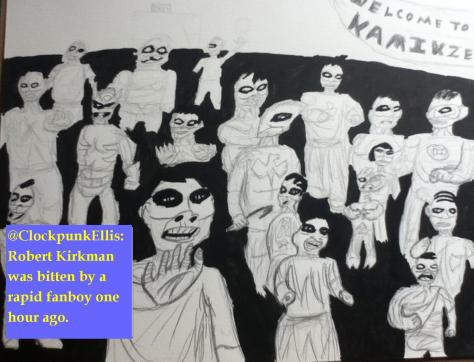
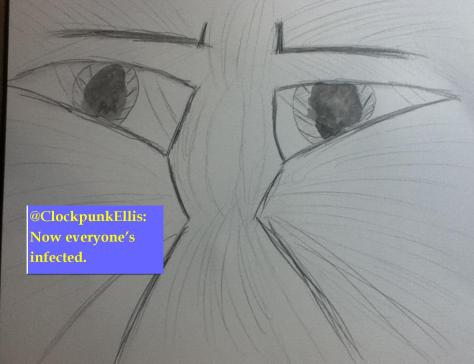
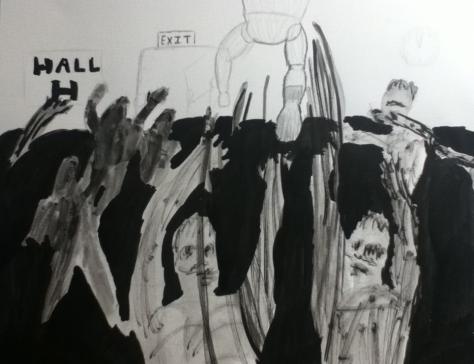
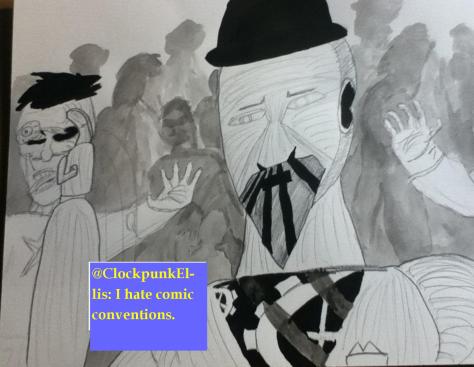
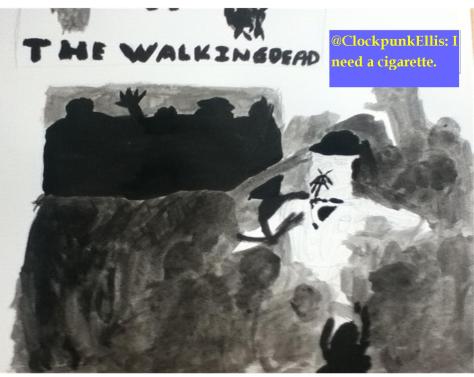
Great work Reed & Josh.
Also, I agree with Bendis’ summary of why writers write: they have to. Artistic creation is a compulsion regardless of whether it is writing, visual arts, dance and so on.
Thanks Cosmo, and I agree with that las point; sometimes I get so inspired I have to draw or do something otherwise I feel awful.
Thanks, Cosmo. Bendis did a great job in that first chapter discussing the reasons and motivations for writing, and I agree with both him and you that artistic creativity is a wonderful compulsion.
I love this. I’d also like to propose that Clock Punk Ellis arch nemesis be another robot named Cock Punch Ellis that was created by Thomas Edison to cock punch people that stole his patents but now also thinks he Warren Ellis and cock punches everybody that disagrees with him.
Josh and I are definitely stealing that idea. You’ve inspired me to introduce a whole cast of old delusional robots that all think that they are the real Warren Ellis, culminating in a “Crisis on Infinite Ellis” event. 🙂
Don’t make me sue you guys for co-credit because I got the Kiby estates lawyers on speed dial
Patrick: be careful, I hear they have the same lawyers that work for the Bob Kane Estate . . .
Which culminates in Warren Ellis reconciling his multiple personalities into one stable individual, who also happens to be Moon Knight . . .
And then an alternate dimension version of all the Ellis’s comes out to fight that Ellis that happens to be Spider Jerusalem
And that is pretty much the next 48 issues of CLOCKPUNK ELLIS. 🙂
Nice review. Cool experiment. My son’s at the age where he likes to make comics with me. Just goofing off for fun, plus I like him having creative projects to exercise his imagination. The stories usually revolve around him and the family fighting off waves of robots, zombies, monsters and ninjas while also saving bystanders who need help.
As an added bonus, we usually incorporate his chores/responsibilities or just things we need to work on in general, making the story a great motivational device and a useful tool for behavior modification.
I want to check out Words for Pictures to see if it can help us improve. 🙂
I think it’s great that you make comics with your son, and that you use the activity to promote imagination and good behavior. Brian Michael Bendis would approve as well. 🙂
If everybody made comics with their children, the world would be a better place.